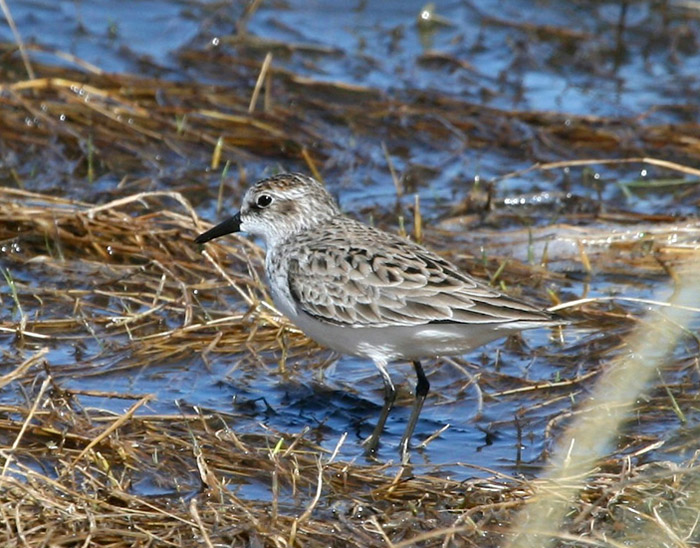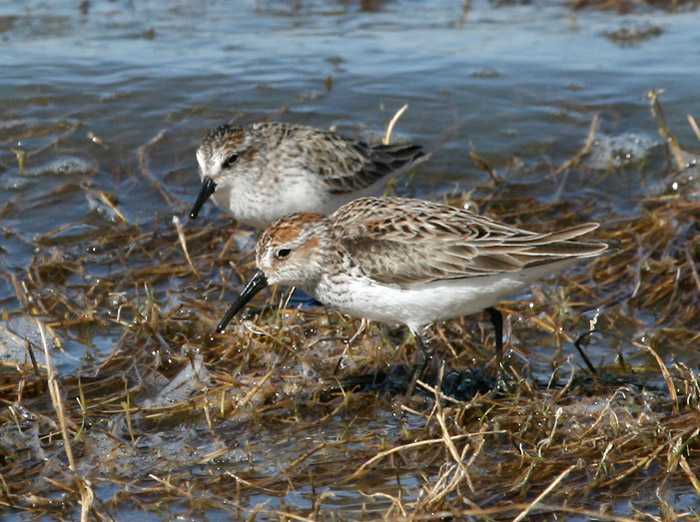 |
 |
|||||||||||||||||||||
|
||||||||||||||||||||||
Semipalmated Sandpiper (Calidris pusilla), Willcox Big Pond, Cochise County
Semipalmated Sandpiper is a rare migrant throughout Arizona, with a high percentage of recent records coming from Willcox in Cochise county. Fall records (i.e. - early July through mid-October) are much more expected than are spring records (late April through late May) in Arizona, with about a 9:1 fall vs. spring record ratio. This adult bird was photographed by Dave Stejskal at Willcox on 30 April 2008.
Semipalmated Sandpiper is sketch details species. Submitting photos to AZFO does not constitute reporting a rare bird for consideration as an official record. To ensure that a record becomes official, details or photos of Sketch Details Species should be sent to the Editors of North American Birds and a full report of Review Species should be submitted to the Arizona Bird Committee. Most rare birds are under _documented and subsequent observers of a rarity are always encouraged to submit reports and additional photos, especially for birds that are challenging to identify.
The top photo shows the Semipalmated Sandpiper alone. Black legs distinguish Western and Semipalmated from Least Sandpiper. Semipalmated differs from Western in having a short, bulbous-tipped bill and in spring it lacks the rusty tones in the scapulars and chevron-shaped marks on the side of the breast of the Western.
In the second photo, the Semipalmated is behind a Western Sandpiper. Note especially the difference in bill shape with the Western having a more tapering, drooping bill. Westerns have on average longer bills, but males of both species have shorter bills than females and bill lengths can overlap. To add to the confusion, eastern Semipalmateds also have longer bills than western Semipalmateds and therefore eastern female Semipalmateds can have bills that approach even long-billed female Westerns. Fortunately in spring plumage differences can help separate these two difficult species.


30 April 2008, photo by Dave Stejskal
Submitted on 08 May 2008
|
©2005
|
HOME | | | REPORT SIGHTINGS | | | PHOTOS | | | BIRDING | | | JOURNAL | | | ABOUT US | | | CHECKLISTS | | | AZ BIRD COMMITTEE | | | EVENTS | | | LINKS |